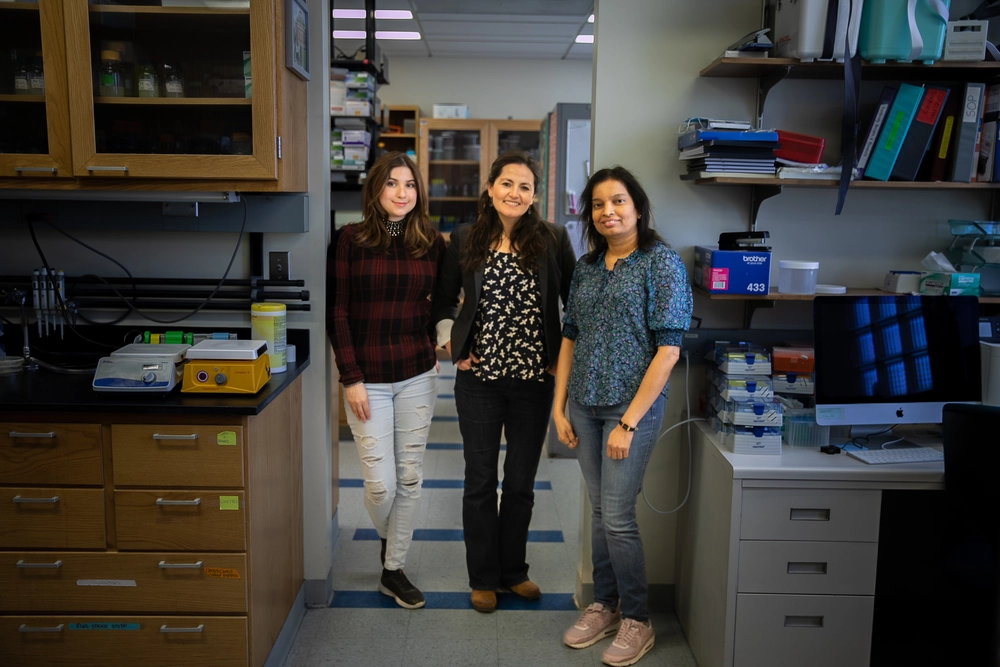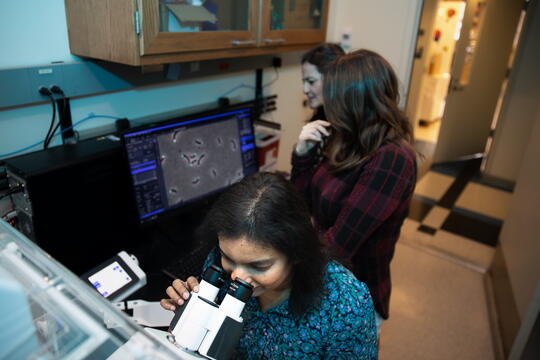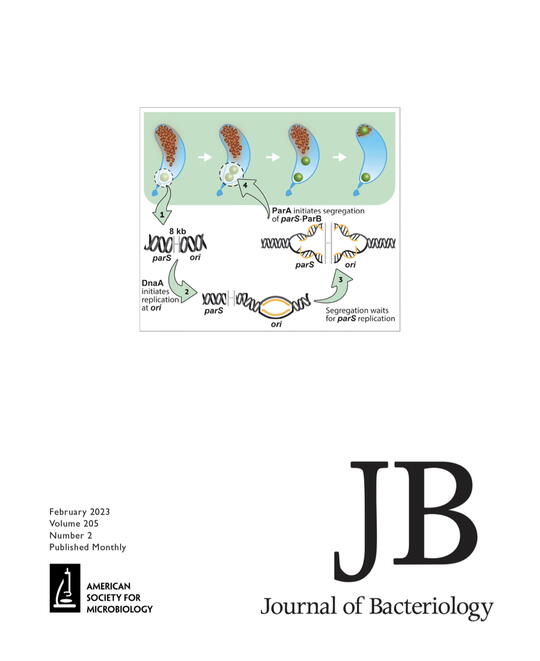
Ask any scientist what happens after they have made a discovery. Rarely has the answer been that they’re done. Instead, each discovery often leads to new questions and new lines of research to pursue, much like a seed that’s been planted and nourished through its life cycle.
It’s fitting, then, that the Mera Lab’s fundamental questions about the bacterial cell cycle have given rise to a multitude of new questions, answers, and more questions.
“We are trying to understand how these little, tiny bacteria; these little, tiny cells, can go from one cell to hundreds of thousands of cells within a window of a few hours,” explained Paola Mera, assistant professor of microbiology in the School of Molecular & Cellular Biology. “How do they manage to grow and make relatively few mistakes? And what’s really exceptional is that these little guys have to copy their genomic information, which, when stretched out, can be 100 times bigger than the cell.”

In a recent paper published in the Journal of Bacteriology, the Mera Lab focused on how the bacterium Caulobacter crescentus coordinates the replication and separation of the chromosome simultaneously. The researchers found that the regulators of those two crucial events communicate with each other in both directions.
Their data showed that increasing the levels of the key regulator of chromosome segregation, ParA, gave the cells multiple replication starting points. The team has hypothesized that ParA’s ability to kickstart replication in Caulobacter crescentus is an indirect result of altered events throughout the cell cycle.
Through ongoing research, the authors have further found that the cell cycle is highly regulated. Even the slightest disruption to ParA’s activity is lethal to the cell.
“These [regulators] could be potential targets, because if you hit those lines of communication, they’re dead,” Mera explained. “If we understand that, we can provide more insights for the design of novel antibiotics that can inhibit the growth of bad bacteria, and also help the growth of good bacteria. So, it’s a fundamental question of how the cell works that we’re interested in trying to understand.”
This particular line of research blossomed following another Mera Lab study, published in mBio in 2019, that focused on chromosome dynamics in Caulobacter crescentus. Research scientist Inoka Menikpurage, PhD, found that cells that overexpressed parA appeared to start chromosome replication in cells missing the replication initiator DnaA.
“We were just looking for one thing, and then I made this strain, and we found what we were looking for,” Menikpurage explained of the replication process. “That’s when we started this story.”
While the lab has had access to a wide array of microscopes through the Carl R. Woese Institute of Genomic Biology’s Core Facilities, Mera said funding from the National Institutes of Health helped her acquire a new inverted microscope that played an integral role in this research.
“Because of the funding, and also the support here at UIUC, this story came together,” Mera acknowledged.
For co-author Stephanie G. Puentes-Rodriguez, a microbiology graduate student, the research process was both exciting and surprising.
“This was my first paper, and what excited me is the way that while we conducted research, the data was giving us clues and hints about what to look for,” Puentes-Rodriguez shared. “It was really interesting for me to be able to say I am doing this, but that is not what the cell is telling me, what it’s trying to teach me; it’s something much different.”

Mera said this latest publication has already led to new lines of research. That isn’t the only seed she’s planted in her lab; each project has provided undergraduate researchers with a chance to learn more about a field Mera is so passionate about. The women who share authorship over the Journal of Bacteriology article are all taking an active role in ensuring more and more women become microbiologists and scientists at large.
“It feels like women are finally reaching a turning point when it comes to science,” said Puentes-Rodriguez. “It’s exciting not only for me with this [women-led] paper; I also teach a class and it is composed of almost exclusively women. You’re seeing that these opportunities are starting to come for everybody.”
"This group of women is very diverse, and each woman is at a different stage in their career, so that’s very exciting,” Mera enthused. “Diversity, personally, is very meaningful to me. I know that we all come from unique backgrounds and that uniqueness brings powerful ideas to the team. So, I think that has made our team very strong, and I’m super excited about perhaps helping a little bit to increase diversity in this wonderful world of science.”


